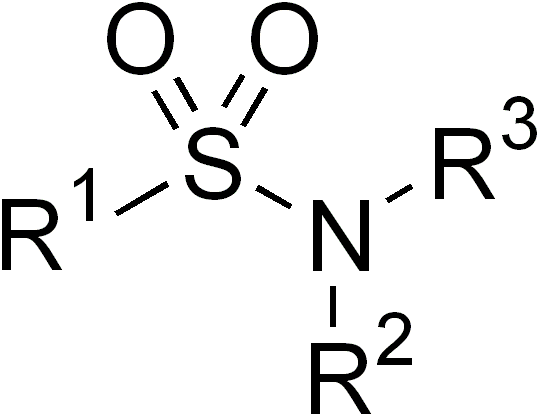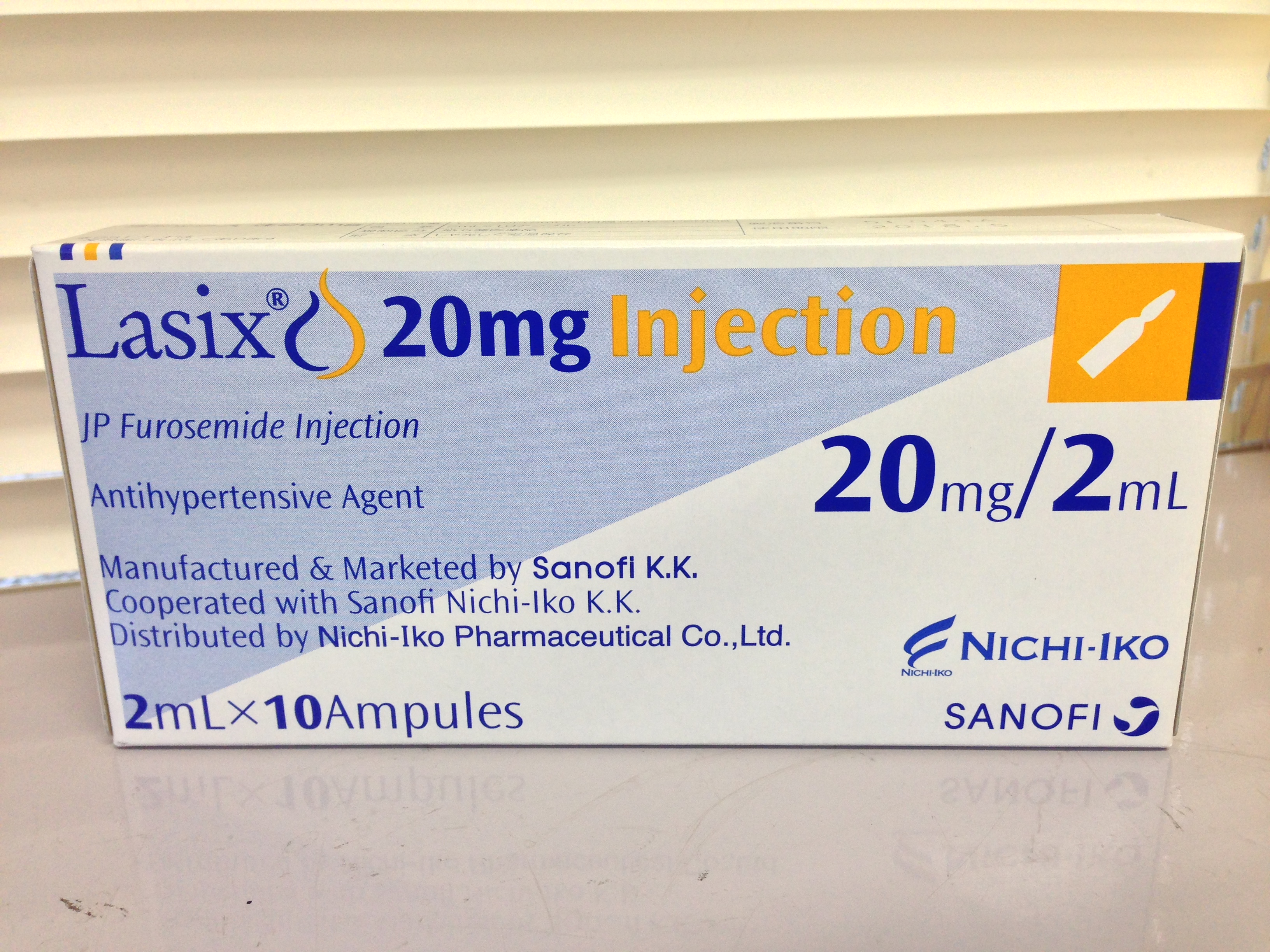|
Chlorothiazide
Chlorothiazide, sold under the brand name Diuril among others, is an organic compound used as a diuretic and as an antihypertensive. It is used both within the hospital setting or for personal use to manage excess fluid associated with congestive heart failure. Most often taken in pill form, it is usually taken orally once or twice a day. In the ICU setting, chlorothiazide is given to diurese a patient in addition to furosemide (Lasix). Working in a separate mechanism from furosemide and absorbed enterically as a reconstituted suspension administered through a nasogastric tube (NG tube), the two drugs potentiate one another. It was patented in 1956 and approved for medical use in 1958. It is on the World Health Organization's List of Essential Medicines. Indications * Large amount of excess fluid including: **Heart failure **Peripheral edema **Hypertension Contraindications *Anuria * Allergies to sulfa drugs Side effects * Nausea / Vomiting * Headache * Dizziness * ... [...More Info...] [...Related Items...] OR: [Wikipedia] [Google] [Baidu] |
Hydrochlorothiazide
Hydrochlorothiazide, sold under the brand name Hydrodiuril among others, is a diuretic medication used to treat hypertension and swelling due to fluid build-up. Other uses include treating diabetes insipidus and renal tubular acidosis and to decrease the risk of kidney stones in those with a high calcium level in the urine. Hydrochlorothiazide is taken by mouth and may be combined with other blood pressure medications as a single pill to increase effectiveness. Hydrochlorothiazide is a thiazide medication which inhibits reabsorption of sodium and chloride ions from the distal convoluted tubules of the kidneys, causing a natriuresis. This initially increases urine volume and lowers blood volume. It is believed to reduce peripheral vascular resistance. Potential side effects include poor kidney function, electrolyte imbalances, including low blood potassium, and, less commonly, low blood sodium, gout, high blood sugar, and feeling lightheaded with standing. Two ... [...More Info...] [...Related Items...] OR: [Wikipedia] [Google] [Baidu] |
WHO Model List Of Essential Medicines
The WHO Model List of Essential Medicines (aka Essential Medicines List or EML), published by the World Health Organization (WHO), contains the medications considered to be most effective and safe to meet the most important needs in a health system. The list is frequently used by countries to help develop their own local lists of essential medicines. , more than 155 countries have created national lists of essential medicines based on the World Health Organization's model list. This includes both Developed country, developed and Developing country, developing countries. The list is divided into core items and complementary items. The core items are deemed to be the most cost-effective options for key health problems and are usable with little additional health care resources. The complementary items either require additional infrastructure such as specially trained health care providers or diagnostic equipment or have a lower cost–benefit ratio. About 25% of items are in the ... [...More Info...] [...Related Items...] OR: [Wikipedia] [Google] [Baidu] |
Thiazides
Thiazide () refers to both a class of sulfur-containing organic molecules and a class of diuretics based on the chemical structure of benzothiadiazine. The thiazide drug class was discovered and developed at Merck and Co. in the 1950s. The first approved drug of this class, chlorothiazide, was marketed under the trade name Diuril beginning in 1958. In most countries, thiazides are the least expensive antihypertensive drugs available. Thiazide organic molecules are bi-cyclic structures that contain adjacent sulfur and nitrogen atoms on one ring. Confusion sometimes occurs because thiazide-like diuretics such as indapamide are referred to as thiazides despite not having the thiazide chemical structure. When used this way, "thiazide" refers to a drug which acts at the thiazide receptor. The thiazide receptor is a Sodium-chloride symporter, sodium-chloride transporter that pulls Sodium chloride, NaCl from the Lumen (anatomy), lumen in the distal convoluted tubule. Thiazide diuretics ... [...More Info...] [...Related Items...] OR: [Wikipedia] [Google] [Baidu] |
Antihypertensive
Antihypertensives are a class of drugs that are used to treat hypertension (high blood pressure). Antihypertensive therapy seeks to prevent the complications of high blood pressure, such as stroke, heart failure, kidney failure and myocardial infarction. Evidence suggests that a reduction of blood pressure by 5 mmHg can decrease the risk of stroke by 34% and of ischaemic heart disease by 21%. It can reduce the likelihood of dementia, heart failure, and mortality from cardiovascular disease. There are many classes of antihypertensives, which lower blood pressure by different means. Among the most important and most widely used medications are thiazide diuretics, calcium channel blockers, angiotensin-converting enzyme inhibitors (ACE inhibitors), angiotensin II receptor blockers or antagonists (ARBs), and beta blockers. Which type of medication to use initially for hypertension has been the subject of several large studies and resulting national guidelines. The fundamental ... [...More Info...] [...Related Items...] OR: [Wikipedia] [Google] [Baidu] |
Benzothiadiazines
Benzothiadiazine is a chemical compound that consists of a benzene ring fused to a thiadiazine ring. Thiadiazine in turn is a six-membered heterocycle composed of three carbon atoms, one sulfur atom, and two nitrogen atoms. Some benzothiadiazine derivatives are used as pharmaceutical drugs, including: * bendroflumethiazide * chlorothiazide * cyclothiazide * hydrochlorothiazide Hydrochlorothiazide, sold under the brand name Hydrodiuril among others, is a diuretic medication used to treat hypertension and swelling due to fluid build-up. Other uses include treating diabetes insipidus and renal tubular acidosis and t ... * diazoxide References {{heterocyclic-stub ... [...More Info...] [...Related Items...] OR: [Wikipedia] [Google] [Baidu] |
Sulfa Drug
Sulfonamide is a functional group (a part of a molecule) that is the basis of several groups of drugs, which are called sulphonamides, sulfa drugs or sulpha drugs. The original antibacterial sulfonamides are synthetic antimicrobial agents that contain the sulfonamide group. Some sulfonamides are also devoid of antibacterial activity, e.g., the anticonvulsant sultiame. The sulfonylureas and thiazide diuretics are newer drug groups based upon the antibacterial sulfonamides. Allergies to sulfonamides are common. The overall incidence of adverse drug reactions to sulfa antibiotics is approximately 3%, close to penicillin; hence medications containing sulfonamides are prescribed carefully. Sulfonamide drugs were the first broadly effective antibacterials to be used systemically, and paved the way for the antibiotic revolution in medicine. Function In bacteria, antibacterial sulfonamides act as competitive inhibitors of the enzyme dihydropteroate synthase (DHPS), an enzyme i ... [...More Info...] [...Related Items...] OR: [Wikipedia] [Google] [Baidu] |
Diuretic
A diuretic () is any substance that promotes diuresis, the increased production of urine. This includes forced diuresis. A diuretic tablet is sometimes colloquially called a water tablet. There are several categories of diuretics. All diuretics increase the excretion of water from the body, through the kidneys. There exist several classes of diuretic, and each works in a distinct way. Alternatively, an antidiuretic, such as vasopressin ( antidiuretic hormone), is an agent or drug which reduces the excretion of water in urine. Medical uses In medicine, diuretics are used to treat heart failure, liver cirrhosis, hypertension, influenza, water poisoning, and certain kidney diseases. Some diuretics, such as acetazolamide, help to make the urine more alkaline, and are helpful in increasing excretion of substances such as aspirin in cases of overdose or poisoning. Diuretics are sometimes abused by people with an eating disorder, especially people with bulimia nervosa, with the ... [...More Info...] [...Related Items...] OR: [Wikipedia] [Google] [Baidu] |
Hypokalemia
Hypokalemia is a low level of potassium (K+) in the blood serum. Mild low potassium does not typically cause symptoms. Symptoms may include feeling tired, leg cramps, weakness, and constipation. Low potassium also increases the risk of an abnormal heart rhythm, which is often too slow and can cause cardiac arrest. Causes of hypokalemia include vomiting, diarrhea, medications like furosemide and steroids, dialysis, diabetes insipidus, hyperaldosteronism, hypomagnesemia, and not enough intake in the diet. Normal potassium levels in humans are between 3.5 and 5.0 mmol/L (3.5 and 5.0 mEq/L) with levels below 3.5 mmol/L defined as hypokalemia. It is classified as severe when levels are less than 2.5 mmol/L. Low levels may also be suspected based on an electrocardiogram (ECG). The opposite state is called hyperkalemia that means high level of potassium in the blood serum. The speed at which potassium should be replaced depends on whether or not there are symptom ... [...More Info...] [...Related Items...] OR: [Wikipedia] [Google] [Baidu] |
Furosemide
Furosemide, sold under the brand name Lasix among others, is a loop diuretic medication used to treat edema due to heart failure, liver scarring, or kidney disease. Furosemide may also be used for the treatment of high blood pressure. It can be taken intravenously or orally. When given intravenously, furosemide typically takes effect within five minutes; when taken orally, it typically metabolizes within an hour. Common side effects include orthostatic hypotension (decrease in blood pressure while standing, and associated lightheadedness), tinnitus (ringing in the ears), and photosensitivity (sensitivity to light). Potentially serious side effects include electrolyte abnormalities, low blood pressure, and hearing loss. It is recommended that serum electrolytes (especially potassium), serum , creatinine, BUN levels, and liver and kidney functioning be monitored in patients taking furosemide. It is also recommended to be alert for the occurrence of any potential blood d ... [...More Info...] [...Related Items...] OR: [Wikipedia] [Google] [Baidu] |
Hypertension
Hypertension, also known as high blood pressure, is a Chronic condition, long-term Disease, medical condition in which the blood pressure in the artery, arteries is persistently elevated. High blood pressure usually does not cause symptoms itself. It is, however, a major risk factor for stroke, coronary artery disease, heart failure, atrial fibrillation, peripheral arterial disease, vision loss, chronic kidney disease, and dementia. Hypertension is a major cause of premature death worldwide. High blood pressure is classified as essential hypertension, primary (essential) hypertension or secondary hypertension. About 90–95% of cases are primary, defined as high blood pressure due to non-specific lifestyle and Genetics, genetic factors. Lifestyle factors that increase the risk include excess salt in the diet, overweight, excess body weight, smoking, physical inactivity and Alcohol (drug), alcohol use. The remaining 5–10% of cases are categorized as secondary hypertension, d ... [...More Info...] [...Related Items...] OR: [Wikipedia] [Google] [Baidu] |
Albert Lasker Award For Basic Medical Research
The Albert Lasker Award for Basic Medical Research is one of the Lasker Award, prizes awarded by the Lasker Foundation for a fundamental discovery that opens up a new area of biomedical science. The award frequently precedes a Nobel Prize in Physiology or Medicine, Nobel Prize in Medicine; almost 50% of the winners have gone on to win one. List of recipients See also * List of biomedical science awards Notes {{Reflist Biomedical awards, Lasker Lasker Award ... [...More Info...] [...Related Items...] OR: [Wikipedia] [Google] [Baidu] |
Hypomagnesia
Magnesium deficiency is an electrolyte disturbance in which there is a low level of magnesium in the body. Symptoms include tremor, poor coordination, muscle spasms, loss of appetite, personality changes, and nystagmus. Complications may include seizures or cardiac arrest such as from torsade de pointes. Those with low magnesium often have low potassium. Causes include low dietary intake, alcoholism, diarrhea, increased urinary loss, and poor absorption from the intestines. Some medications may also cause low magnesium, including proton pump inhibitors (PPIs) and furosemide. The diagnosis is typically based on finding low blood magnesium levels, also called hypomagnesemia. Normal magnesium levels are between 0.6 and 1.1 mmol/L (1.46–2.68 mg/dL) with levels less than 0.6 mmol/L (1.46 mg/dL) defining hypomagnesemia. Specific electrocardiogram (ECG) changes may be seen. Treatment is with magnesium either by mouth or intravenously. For those with seve ... [...More Info...] [...Related Items...] OR: [Wikipedia] [Google] [Baidu] |





